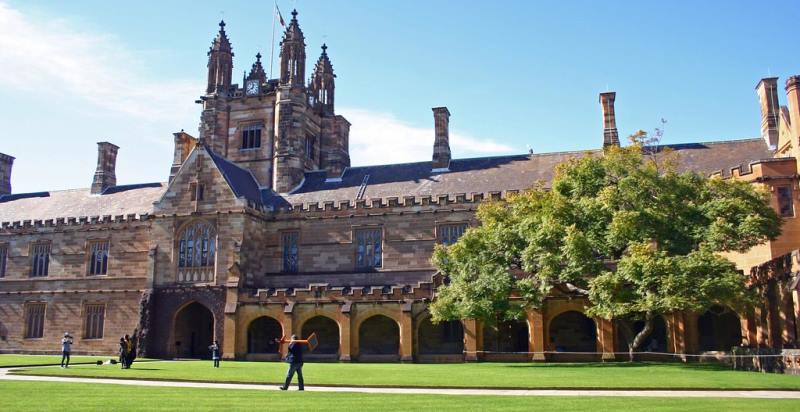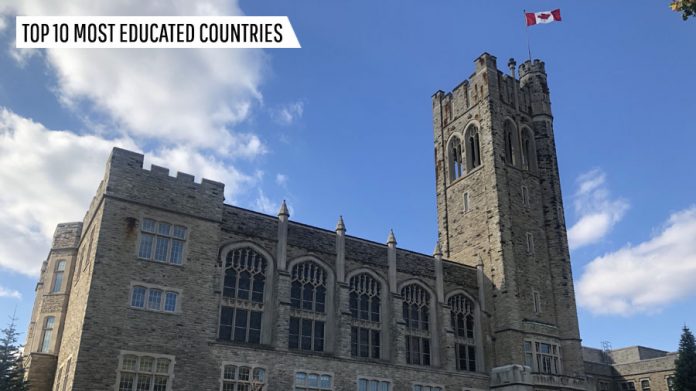There are various levels of education in nations around the world. Most adults in more advanced countries are educated and have basic secondary education. The opposite is usually true in less developed nations. The quality of education is poor in underdeveloped and poorest countries, while many people are unable to access education. The number of students attending universities worldwide increased from 100 million in 2000 to 207 million in 2014, according to a 2017 UNESCO report.
The educational levels can be broken down into three levels: high school, secondary school, and tertiary. After six years of primary school, secondary education occurs and is followed by higher education, training, or employment. In most countries, secondary education is mandatory. Tertiary education, also known as post-secondary education, refers to any education beyond the secondary level, for instance, certificate programs, undergraduate programs, graduate or business programs or schools, etc.
What is the least educated country?
With a literacy rate of 27.0%, South Sudan is the least educated country.
What is the number 1 university in the world?
Best United States university: Massachusetts Institute of Technology (MIT)
What is the hardest college to get into in the world?
Harvard University
This renowned university is also one of the toughest to get into; it has an acceptance rate of a staggeringly low 5.4%.
So, without any further discussion, let’s round to the top ten Most Educated Country in 2023!
10. Luxembourg
| Population: | 634,814 |
| Tertiary: | 40.33% |
| Upper Secondary: | 36.37% |
| Literacy Rate: | 99% |
In Western Europe, Luxembourg is a landlocked country. Luxemburg’s education system has three tiers: the first school years are in Luxembourgish, before changing to English, while the language of instruction changes in Luxembourg in a secondary school. Professional qualifications in all three languages are necessary for secondary school graduation, but half of them leave the school without a certificate, and immigrant children are particularly disadvantaged. The University of Luxembourg is Luxembourg’s only university. In 2014, a private initiative was created and accredited by the Ministry of Higher Education and Luxembourg Research 2017. The school was a graduate business school. In Miami University (Dolibois European Center) and the Sacred Heart University, two US universities maintain satellite campuses (Luxembourg Campus).

9. Norway
| Population: | 5,465,630 |
| Tertiary: | 43.21% |
| Upper Secondary: | 38.76% |
| Literacy Rate: | 99% |
There are three areas for the Norwegian school system: elementary school (Barneskole, 6-13 years of age), high school (Ungdomsskole, 13-16 years of age), or secondary school (Videregående Skole, 16-19 years of age). The Barneskole or Ungdomsskole is obligatory and is commonly referred to as Grunnskole (‘bases’). With the new reform, IT is required to be included in schools, and many districts provide computers to students of general education at a free or small charge. It is also more difficult for Kunnskapsloftet to switch between electives you take in general studies for the second and third years. They often celebrate with parties and festivities held a couple of weeks before the final year’s exams.
Private schools specialize in popular and limited capacity topics in public schools such as business administration, marketing, or the fine arts. The count of learners in private schools is 10% in higher education, while 4% in secondary education and 1.5% in primary education.

8. Finland
| Population: | 5,548,360 |
| Tertiary: | 44.30% |
| Upper Secondary: | 43.80% |
| Literacy Rate: | 99% |
Over the years, this country, rich in intellectual and educational reform, has brought about a series of new and simple changes which have revolutionized its education system. They overrun the US and are gaining in the countries of East Asia. There are no standardized tests in Finland. Their only exception is the national registration exam, a voluntary test for students at the end of a high school (equivalent to an American high school.) All children in Finland are classified by their teacher on an individual basis and a grading system. The Ministry of Education tracks overall progress and samples groups across various schools. Many school systems are so caring with increasing test results and understanding in mathematics and science that they tend to forget the good, harmonious and healthy environment for students and learners. Many years ago, some serious reforms had done in the Finnish school system.

7. Australia
| Population: | 25,788,215 |
| Tertiary: | 45.36% |
| Upper Secondary: | 35.63% |
| Literacy Rate: | 99% |
Education in Australia includes primary and early childhood education, followed by secondary, tertiary education sectors. States and territories have to regulate and fund education, but the Australian government has a funding role to play as well. Australia is one of the world’s leading providers of education to international school students and is the third-largest provider of international education after the United States and the UK. With 812 000 international students registered at national universities and vocational institutions in 2019, Australia is the world’s highest percentage of students per person of the population on a broad margin. Based on 2017, Australia listed as 0.929, the 7th highest globally, with the 2018 Human Development Index.
In 1966, the Australian government concluded the Education Convention to combat discrimination and racial segregation in the educational field.

6. United States
| Population: | 332,915,073 |
| Tertiary: | 44.36% |
| Upper Secondary: | 44.29% |
| Literacy Rate: | 86% |
Public, private, and home schools provide education in the United States of America. State governments set general education standards, often commission standardized testing for K-12 systems and supervise them, often through boards of directors, state colleges, and universities. State and local governments finance the majority of $1.3 billion, and only about $200 billion is made up of federal money. State law requires education between five and eight years and between sixteen and eighteen years of age, depending on the state. This requirement can be met in public schools, public-certified private schools, or an authorized home school program. There is also a large and huge range of public and private universities throughout the country. After-school education, as first degree and graduate school, divided into college. Higher education comprises extremely rich and selective universities, public research universities, private liberal art colleges, and historically Black universities.

5. United Kingdom
| Population: | 68,207,116 |
| Tertiary: | 45.74% |
| Upper Secondary: | 35.42% |
| Literacy Rate: | 99% |
State law requires education between five and eight years and between sixteen and eighteen years of age, depending on the state. Most schools have three levels of compulsory education: primary, secondary, or junior and secondary education. Through the UK Education Department, the federal government exercises control. There is also a large and huge range of public and private universities throughout the country. After-school education, as first degree and graduate school, divided into college. The UK constitution does not mention education, but it uses the threat of reducing funding to enforce education laws. Recent administrations have sought to ensure more central control of a highly decentralized system through initiatives such as the “No Child Left Behind” Act and the “Race to the Top.”

4. South Korea
| Population: | 51,305,186 |
| Tertiary: | 47.74% |
| Upper Secondary: | 39.87% |
| Literacy Rate: | 97.90% |
Public schools, and also private schools, provide education in South Korea. Both classes receive government funding, even if the amount received by private schools is less than the level given by state schools. The country has one of the OECD countries with the highest educated workforce in the world. The country is known as “Education Faver” for its obsession with education. This country is constantly among the world’s top educators. Higher education in South Korea, regarded as an essential cornerstone of South Korean life, is an overwhelmingly serious issue. Education is considered a high priority for South Korean families because South Korean society’s success is needed to improve one’s socioeconomic status. More than 100,000 Korean students are in the United States. Korea remained the top student country in the USA for a second year ahead of China, thanks to 10 percent every year.

3. Israel
| Population: | 8,789,774 |
| Tertiary: | 50.92% |
| Upper Secondary: | 36.46% |
| Literacy Rate: | 91.75% |
Israel’s education refers to Israel’s comprehensive system of education. There are more to three levels of education in the system: primary, secondary, and tertiary. The mandatory training is from kindergarten to 12th grade. The people of Israel are well-educated, and the society of Israel values education. Many Israeli parents’ education sacrifices their comfort and financial resources to give their children the highest possible educational standards. Education represents the core value in Jewish culture and Israeli society as a whole. For the most part, the Israelis seek education in the country’s competitive hi-tech economy as a passport for decent professional employment in a white-collar and middle-class paycheck. For several reasons, including high quality and its key role in promoting Israel’s economic development and technological boom, the Israeli education system was praised.

2. Japan
| Population: | 126,476,461 |
| Tertiary: | 51.44% |
| Upper Secondary: | 36.46% |
| Literacy Rate: | 99% |
The Japanese system consists primarily of six-year primary schools, three-year junior secondary schools, and three-year secondary schools, with two, three, or four-year junior colleges. Compulsory education lasts through primary and secondary schools for nine years. The quality and performance of Japanese students in literacy, mathematics, and science are consistently high among OECD students. Japanese people are well-trained, and their social values education is a platform for socioeconomic mobility and job creation in Japan’s high-tech economy. The large pool of highly trained and skilled people in this country is largely responsible for promoting Japan’s economic growth after the war. Japanese tertiary-educated adults, especially science and engineering graduates, benefit economically and socially from their high-tech economy education and skills.

1. Canada
| Population: | 38,067,903 |
| Tertiary: | 56.71% |
| Upper Secondary: | 34.41% |
| Literacy Rate: | 99% |
Three grades are available in the Canadian education system: the Bachelor’s, MA, Ph.D. You are invited to do all or part of your education in Canada as an international student. Public and private universities exist in the same way as in other countries.
The way the educational stages are grouped and named in Canada may differ from one region and even from one district to another as different provincial governments manage Canada’s education system. Many Canadians remain polarised in the question of permission to Canadian private universities. The fact that the price for private universities tends to exclude those who cannot afford so much for their education can prevent many of Canada’s population from attending these universities. On the one hand, it finds it difficult to compete with private power hubs because of financing.

Conclusion!
Generally, in underdeveloped countries, the lowest educational rates are seen. Education plays an important role in social, human, and economic development. Education can promote equality between men and women, reduce child marriage, encourage peace and enhance a person’s chance of a safe life. Education is a human right that gives each other more opportunities in life, including employment, better health, and the ability to participate in the political process.
